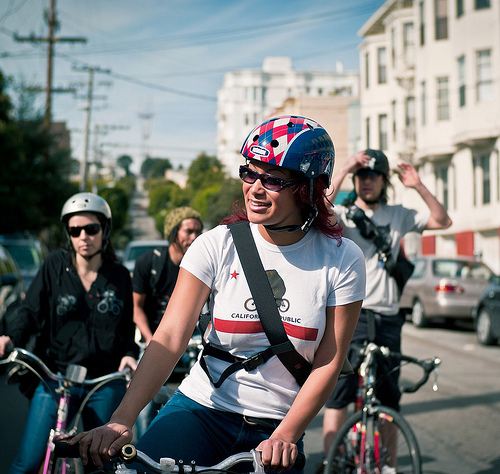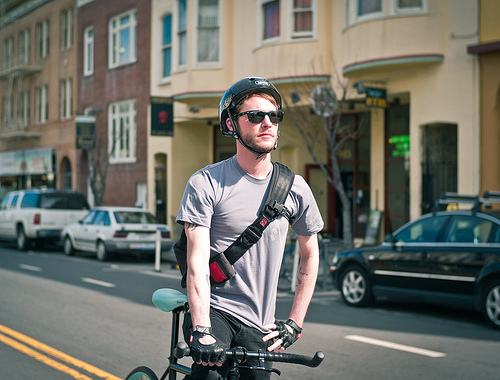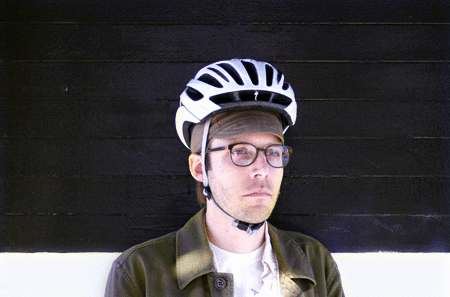The helmet: it's surprising how divisive and misunderstood something so simple can be. Don't worry, we aren't going to lecture you. But if you wear a helmet, or want to, we can help make sure it fits and fits right.

The Types
We're often asked what the difference is between roadie and commuter helmets. The short answer is mostly ventilation, weight and price. Road riders are generally far more weight and temperature conscience, and are willing to pay a premium for a helmet that weighs less than your sock and has tons of vents. While many commuters may log a lot of miles in a day, those miles often aren't in one uninterrupted stretch, so weight and ventilation become less important. Helmets designed for city riding, like those by Bern or Nutcase, tend to have a fuller profile than the road variety while some add a brim.
The Fit
If a helmet feels constricting as soon as you put it on, it's too small. Imagine how uncomfortable it will be in 5 minutes or 5 miles. To make sure it's not too large, employ the bobble head test. Once the helmet is secured, strap and all, wobble your head from side to side. If the helmet rocks back and forth farther than your head does, it's too big. If it sits snug without shifting around excessively it's probably a good fit.
The bottom line: trust yourself. If the helmet feels secure without pinching, it's likely a fit.
The Wear
The most common mistake we see on the streets is the full frontal forehead. We asked our friend Brandon to demonstrate.

To let the helmet do its job and protect your beautiful face it should sit just above your eyebrows. If your helmet is too large or loose it may easily shift back as you ride. Keep it up front.
Once the shell fits and sits right, set the chin strap length. Tighten the strap so that you can just barely slide two stacked fingers between your chin and the strap.

The strap shouldn't hug your chin all the time but if you open your mouth wide it should pull the helmet down onto your head. Our staffer Kai was shameless enough to demonstrate. Classy.
Also, we love cycling caps. They look and feel great under a helmet. Don't be shy about sporting one.
The Safety
All helmets sold in the US since 1999 must pass the same Consumer Product Safety Commission tests. Keeping in mind bike helmets are designed to protect you from a fall or a scrape, no one brand or type is significantly safer than others. Make your purchasing decisions based on comfort and style.

So if you've got helmet hair, wear it with pride. It lets those around you know your bike isn't far away.

Read more »